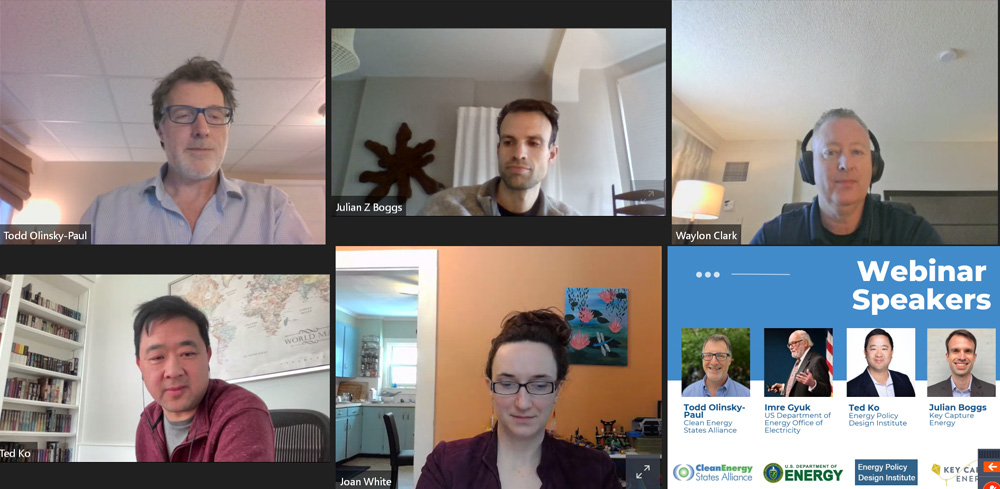The California Energy Commission on Jan. 19 released a draft plan for offshore wind development, adding to the rapidly growing body of work identifying wind power as crucial to achieving state and national clean energy goals.
The plan was developed in accordance with AB 525, the 2022 bill that directed the commission to develop the strategic plan in collaboration with several other state agencies and established a goal of deploying 2 to 5 GW of offshore wind by 2030 and 25 GW by 2045 in California — powering 25 million homes and providing about 13% of the state’s supply. The draft plan also says the U.S. is on the path to deploy 110 GW by 2050.
“On the floating offshore wind side, there is no plan in the country — maybe the world — as comprehensive as this one,” Adam Stern, executive director of Offshore Wind California, told NetZero Insider.
Development of offshore wind infrastructure will occur primarily in federal waters under the jurisdiction of the Department of the Interior’s Bureau of Ocean Energy Management (BOEM). The agency held its first auction for wind power commercial leases in December 2022, which resulted in lease awards to five developers for parcels off California’s North and Central coasts. The winning bids for the lease areas total more than $757 million and include a commitment of more than $50 million to support communities and ocean users through community benefit agreements. (See First West Coast Offshore Wind Auction Fetches $757M.)
Challenges
But amid the progress, challenges remain. Waters off the coast of California are deeper than those in the Atlantic, requiring the installation of floating wind turbines rather than the more common fixed structures, which are suitable for waters about 200 or fewer feet deep. Floating platforms require more infrastructure, including suspended electrical cables linking the turbines, mooring cables and anchors attaching the turbines to the sea floor, with an electrical cable to transport the energy to a substation.
California’s coast is also less populated than the East and will require development and upgrades to ports and waterfront facilities to support offshore wind power, the report says, including construction of floating platforms, manufacturing and storage of components, and long-term operations and maintenance.
“Existing California port infrastructure is unable to support an offshore wind industry in the state,” the plan says. “As it will take a decade to make the needed port improvements that can support the full offshore wind supply chain, the state may need to import components from other parts of the world to meet the state’s 2030 offshore wind planning goals.”
New transmission also will be needed.
“The electric system on the North Coast is relatively isolated from the larger California grid and serves primarily local communities, so additional transmission infrastructure will be needed in this region. Existing transmission on the South-Central Coast is robust; however, there is still a need for long-term planning,” the plan says.
Stacey Shepard, senior information officer at CEC, told NetZero Insider in an email that permitting among local, state and federal agencies is perhaps the largest challenge offshore wind deployment faces.
“Coordination will be critical, but California has successfully coordinated multiple local, state and federal agencies to deploy clean and renewable energy facilities on state lands,” Shepard said.
Benefits
The plan cites several studies that estimate high potential economic and workforce benefits from offshore wind. For example, a Catalyst Environmental Solutions study estimated that a $124 million investment at the Port of Humboldt, a $20 million training center and workforce development, would create 500 annual short-term jobs by 2030 and 14,000 annual long-term jobs by 2045. The study projects that offshore development would generate upward of $5 billion in state-level gross domestic product by 2045, in addition to $1.2 billion in labor income and $385 million in fiscal revenue.
Another study by the Natural Resources Defense Council and Environmental Entrepreneurs estimated that 10 GW of offshore wind development in the Morro Bay and Humboldt areas could create more than 169,000 jobs and more than $45 billion in short-term economic benefits to the state.
Impacts
To better understand the potential impacts associated with offshore wind, the CEC conducted outreach to neighboring communities and tribal nations.
“While permitting agencies and developers have extensive experience with development and operation of various types of onshore and nearshore facilities, including deep water oil and gas platforms, there is a great deal of uncertainty about the impacts from large-scale floating offshore wind facilities anchored more than 20 miles off California’s coast,” the report states.
The plan lays out a detailed analysis of potential impacts associated with the Morro Bay and Humboldt lease areas, which could include habitat displacement of marine animals and birds and entanglement of species in underwater gear. To address some of these challenges, the CEC suggests burying underwater cables, avoiding important habitat and conducting regular monitoring.
AB 525 also directed the CEC to create a strategic plan identifying impacts to Indigenous groups and offering potential solutions. Tribes consulted were concerned with several potential issues associated with offshore wind development, including the perpetuation of resource extraction in their traditional territories that lack benefits to their communities, potential violence associated with the influx of non-local workers, the impact on sacred and historical sites, and more. Suggested strategies included exploring public safety measures to reduce violent crime and sexual and gender-based violence against California tribes and other vulnerable populations, and collaborating on avoidance, mitigation and co-management opportunities.
A framework for identifying suitable sea space was also outlined in the plan, which involves spatial mapping in federal waters from about three miles offshore to the 200-mile federal boundary. So far, the CEC has identified six locations for further screening — five off the North coast and one off the South-Central coast.
The draft strategic plan will be presented at a future public workshop.
“The CEC and collaborating state agencies are proud of the progress to date but appreciates there is much more work to be done,” Shepard said.
